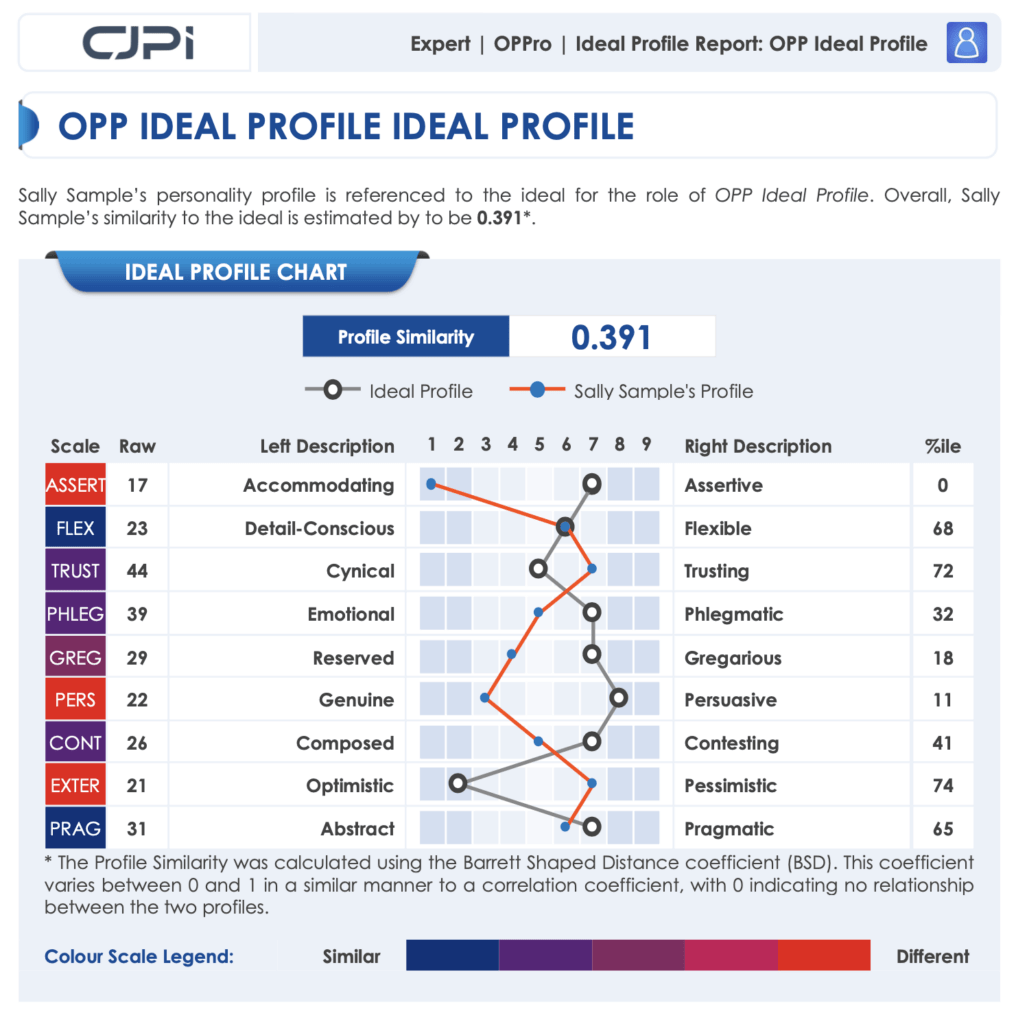Succession planning is a critical process for organisations, ensuring a smooth transition of leadership and maintaining stability. However, simply identifying a successor based on experience and qualifications may not be enough to guarantee success. Using personality profiling in succession planning is likely to reveal robust insights into the process.
Professional occupational personality profiling has emerged as a valuable tool in CEO succession planning, as it provides insights into the leadership style, behaviour, and values of potential candidates.
The Importance of Personality Profiling in CEO Succession Planning
Personality profiling plays a crucial role in CEO succession planning due to its ability to provide a deep understanding of a candidate’s leadership style, traits and behaviour. Many organisations recognise that leadership effectiveness goes beyond technical skills and experience. Having a CEO whose personality aligns with the company culture and values is essential for achieving long-term success. Personality profiling allows organisations to identify candidates who possess the right traits and characteristics required for effective leadership.
How Personality Profiling Enhances the Succession Planning Process
Personality profiling enhances the succession planning process by providing objective insights into a candidate’s strengths, weaknesses, and potential leadership style. By using validated assessment tools, organisations can assess key personality traits such as emotional intelligence, adaptability, decision-making skills, and conflict-resolution abilities. These insights enable organisations to compare candidates against a desired leadership profile, identifying potential gaps and areas for development. Additionally, personality profiling can help in identifying candidates who may have the potential to excel in specific areas, allowing for tailored development plans and targeted training opportunities.
Personality profiling also aids in identifying potential red flags or warning signs that may not be apparent through traditional evaluation methods. Assessing a candidate’s personality traits can result in valuable insights into their approach to decision-making, risk-taking, and handling difficult situations. This information can be used to identify any potential mismatches between a candidate’s personality and the demands of the CEO role. By addressing these issues during the succession planning process, businesses can proactively mitigate risks and avoid costly leadership mistakes.
A Step-by-Step Guide to Utilising Personality Profiling in CEO Succession
- Identify the desired leadership profile – Start by defining the ideal personality traits, behaviour, and values that align with the organisation’s culture and strategic goals. This profile should consider the specific challenges and requirements of the CEO role. Professional succession consultants such as CJPI can also profile incumbent CEOs to benchmark them as part of the ideal profile creation (see below).
- Select a validated assessment tool – Choose a scientifically-backed personality profiling tool that aligns with the organisation’s needs. Ensure the tool measures relevant leadership traits and provides reliable and valid results. Many of the most powerful tools are not available to the general public and therefore you might wish to strongly consider getting professional help. Also – make sure you test the chosen tool to make sure the results are accurate.
- Assess potential candidates – Administer the assessment tool to the shortlisted candidates. Ensure confidentiality and communicate the purpose and benefits of the assessment to encourage candid responses.
- Analyse and compare results – Evaluate the assessment results, comparing candidates against the desired leadership profile. Identify strengths, weaknesses, and potential areas for development for each candidate.
- Consider the broader context – Take into account other factors such as experience, qualifications, and performance reviews alongside personality profiling results. Use the comprehensive picture to make informed decisions about potential successors.
- Develop tailored development plans – Utilise the insights gained from personality profiling to design individualised development plans for selected candidates. Focus on addressing any identified gaps or areas for improvement.
Benchmark Profiling (Ideal Profile vs Candidate)

This is an example of our professionally administered OPP Ideal Profile Report which shows the ‘ideal profile’ generated for the specific role, against the candidate. This shows a summary for each of the metrics we assess, with an overall similarity of 39% against the ideal. The report itself goes into detail about any potential gaps and what questions the interviewer may wish to ask to ‘bridge’ those gaps. These reports are invaluable for succession planning and where a theoretical ideal can be generated with confidence.
Conclusion
Personality profiling provides organisations with a powerful tool to enhance CEO succession planning. It reveals deeper insights into a candidate’s personality, which you can use to make more informed decisions, minimise risks, and increase the likelihood of a successful transition.



